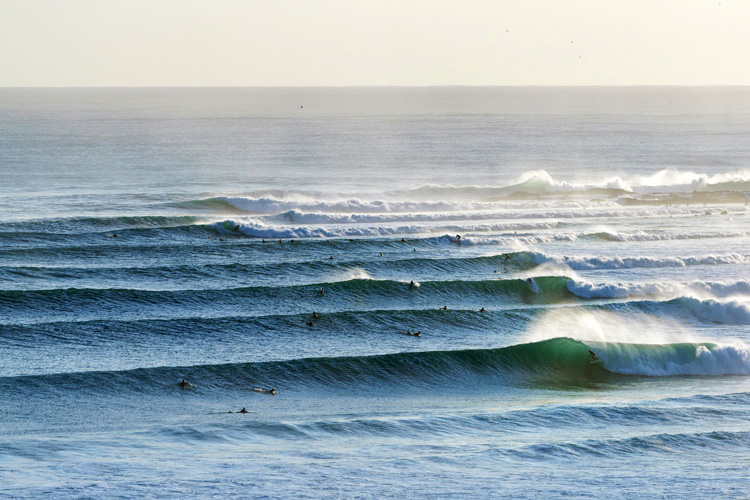One of surfing's most underestimated surf forecasting variables is the swell period.
The quality of waves in a given location largely depends on the timing of sets coming in.
The amount of time it takes for two successive wave crests to pass through a determined point is called the swell period or wave interval.
The swell period is critical surf knowledge because it ultimately measures the quality of the upcoming surf session.
High-quality waves - from groundswells - are generated in the open ocean, hundreds of miles offshore.
Do you usually check wave period forecasts for your region? Learning to interpret this information is easy.
Short intervals of time - between 1 and 10 seconds - may indicate that one spot is pumping surf generated by local winds or regional wave currents.
This means low-quality surf.
When surf report data tells of 20-second periods between waves, as well as light offshore winds, the chances of enjoying a glassy, perfect-peeling wave experience dramatically increase.
Energy Waves
The National Oceanic and Atmospheric Administration (NOAA) notes that the peak period identifies either the period (the time between waves) associated with the locally generated wind sea (in cases with strong local winds) or the dominant wave system (swell) that is generated elsewhere.
Long-period swells accumulate energy, travel faster, and can easily cope with local winds and currents, resulting in larger surf when it comes to average wave height.
Forerunners are the first waves coming in on long-period swells. They usually move faster than the remaining carriages of the wave train.
Although forerunner waves carry a large amount of energy, they are not easily spotted by surfers because they don't show much surfing potential.
They indicate that more quality waves are coming in on the horizon.
In conclusion, the greater the wave period, the better the swell.
Also, take a look at how waves are formed, the difference between ground swells and wind swells, and the effects of shoaling and refraction in wave height.
Wave Period and Wave Conditions
- 1-5 seconds: Local wind swells with bumpy and disordered waves. Poor surfing conditions;
- 6-8 seconds: Regional and local wind swells with average surfing conditions. Offshore winds might get it better;
- 8-10 seconds: Medium-distance swells improve the local surfing conditions. Go for it;
- 10-12 seconds: The power of ground swells is taking effect; Definitely worth it;
- +13 seconds: A long period swell brings high-quality waves. Epic surf session ahead;
Words by Luís MP | Founder of SurferToday.com
